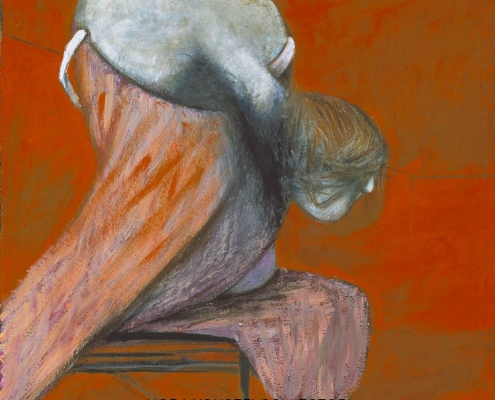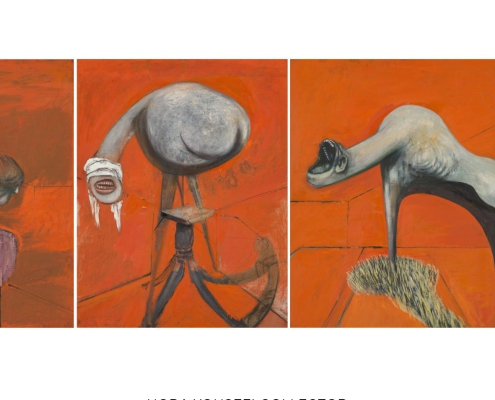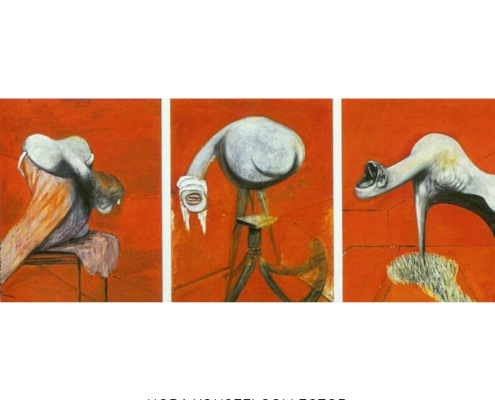فرانسیس بیکن نام این اثر را برگرفته از چهره هایی است که اغلب در نقاشی های مسیحی که شاهد مرگ عیسی هستند، نمایش داده می شوند. اما او گفت که این موجودات نشان دهنده خشم های انتقام جو از اساطیر یونان هستند. خشمگین ها کسانی را که بر خلاف نظم طبیعی هستند مجازات می کنند. به عنوان مثال، در تراژدی آیسخولوس، Eumenides، مردی را تعقیب میکنند که مادرش را به قتل رسانده است. بیکن اولین بار این نقاشی را در آوریل 1945 در اواخر جنگ جهانی دوم به نمایش گذاشت. برای برخی، ترس از جنگ و هولوکاست در جهانی فاقد اصول راهنما است.
Francis Bacon took the name of this work from the figures that are often shown in Christian paintings that witness the death of Jesus. But he said the creatures represented the vengeful wraths of Greek mythology. The wraiths punish those who go against the natural order. For example, in Aeschylus’ tragedy, the Eumenides, a man is hunted down for murdering his mother. Bacon first exhibited this painting in April 1945 at the end of World War II. For some, the fear of war and holocaust in a world without guiding principles.
تحليل هدی یوسفی






